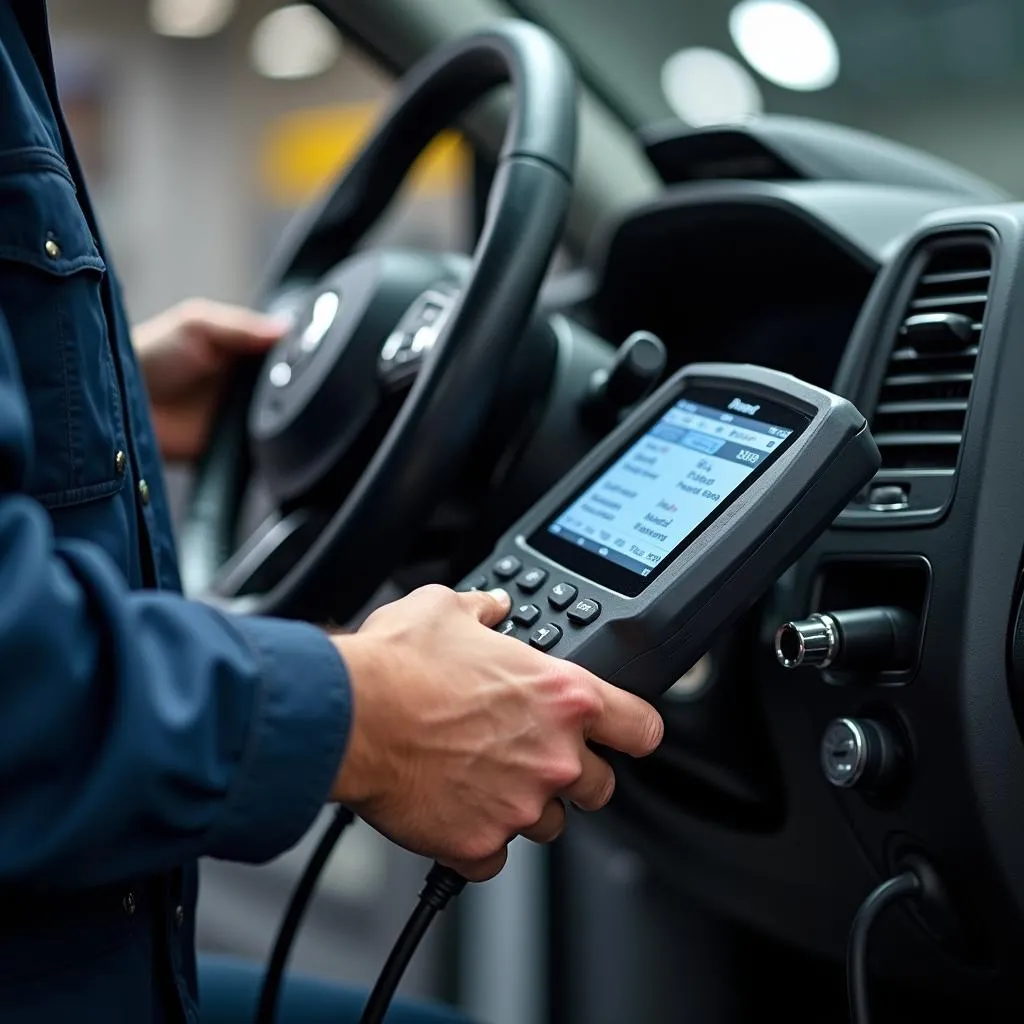Experiencing a vehicle starting issue and suspecting Intel Anti-Theft Technology might be the culprit? You’re not alone. This technology, while designed to protect your car, can sometimes throw a wrench in your plans. While we strongly advise against disabling any anti-theft system without proper authorization, this article aims to shed light on what Intel Anti-Theft Technology is, how it works, and the potential ways to address situations where it might be causing problems.
Understanding Intel Anti-Theft Technology
Before we delve into disabling it, it’s essential to understand how this technology works. Essentially, Intel Anti-Theft Technology is like an invisible shield for your car. It uses a sophisticated system of software and hardware components to prevent unauthorized access and theft.
How it Works
- Immobilizer: The system typically includes an immobilizer linked to your car key. This immobilizer communicates with your car’s Engine Control Unit (ECU). If the key isn’t recognized, the ECU won’t allow the engine to start.
- Data Encryption: Intel Anti-Theft Technology often employs robust data encryption to protect your vehicle’s data and communication channels, making it extremely difficult for thieves to hack into.
Identifying an Intel Anti-Theft Issue
Often, an issue with the Intel Anti-Theft system presents itself as a starting problem. Here are a few telltale signs:
- Immobilizer Warning Light: Look for a flashing light on your dashboard that resembles a car with a key or a padlock. This is a common indicator of an immobilizer issue.
- Cranks but Won’t Start: If your engine cranks but refuses to start, especially after a battery change or jump-start, the anti-theft system might be preventing ignition.
- Key Not Detected: In some cases, the system might not recognize your key, even if it’s the correct one. This could be due to a problem with the key’s chip, the immobilizer receiver in your car, or a software glitch.
 Car Dashboard with Immobilizer Warning Light
Car Dashboard with Immobilizer Warning Light
Disabling Intel Anti-Theft Technology: What You Need
Disclaimer: Tampering with your car’s anti-theft system can have serious consequences, including potential damage and voiding your warranty. We strongly advise against attempting to disable the system yourself. If you’re experiencing issues, consult a qualified automotive locksmith or a trusted mechanic.
If you were to troubleshoot this issue, you would need specialized equipment:
- Advanced Diagnostic Tool: Accessing and interacting with the Intel Anti-Theft system requires a high-end automotive diagnostic tool capable of communicating with your car’s ECU. These tools are typically used by dealerships and professional mechanics.
- Security Access Codes: Disabling the system might require specific security access codes that are unique to your vehicle. Obtaining these codes can be very difficult, and often requires proof of ownership and authorization from the manufacturer.
 Automotive Diagnostic Tool Connected to Car
Automotive Diagnostic Tool Connected to Car
Addressing the Issue
- Check the Basics: Before diving into complex procedures, start with the basics. Ensure your car battery is charged, the key fob battery is working, and you’re using the correct key.
- Consult Your Owner’s Manual: Your vehicle owner’s manual might offer troubleshooting steps for specific anti-theft system issues.
- Seek Professional Help: If basic checks and manual troubleshooting fail, it’s crucial to contact a qualified automotive locksmith or a trusted mechanic specializing in automotive electronics. They have the expertise, tools, and resources to properly diagnose and address any issues with your Intel Anti-Theft system.
FAQs about Intel Anti-Theft and Car Diagnostics
Q: Can a dead car battery trigger the Intel Anti-Theft system?
A: While a dead battery itself doesn’t usually activate the anti-theft system, the process of jump-starting or replacing the battery can sometimes cause temporary confusion in the system, leading it to engage.
Q: Can aftermarket car alarms interfere with Intel Anti-Theft Technology?
A: Yes, aftermarket installations, particularly those involving the ignition system or immobilizer components, can sometimes conflict with the factory-installed Intel Anti-Theft system. If you experience issues after an aftermarket installation, consult with a qualified professional.
Q: What are some advanced diagnostic tools used by professionals to diagnose and troubleshoot Intel Anti-Theft systems?
A: Professionals often rely on advanced diagnostic tools from reputable brands like those offered on Cardiagtech. These tools provide in-depth access to a vehicle’s electronic systems, allowing for accurate diagnosis and repair.
In Conclusion
Disabling Intel Anti-Theft Technology is not something to be taken lightly. While we understand the frustration of encountering a potential issue, seeking professional help is crucial. Not only can they accurately diagnose the problem, but they can also ensure your car’s safety and security remain uncompromised. Remember, your safety and the security of your vehicle should always come first.
If you need to learn more about Intel Anti-Theft Technology or want to explore our range of advanced automotive diagnostic solutions, visit CARDIAGTECH. We offer a wide array of products and resources designed to help you stay informed and get your vehicle back on the road safely.

